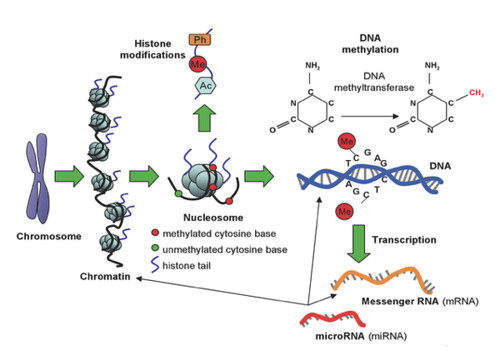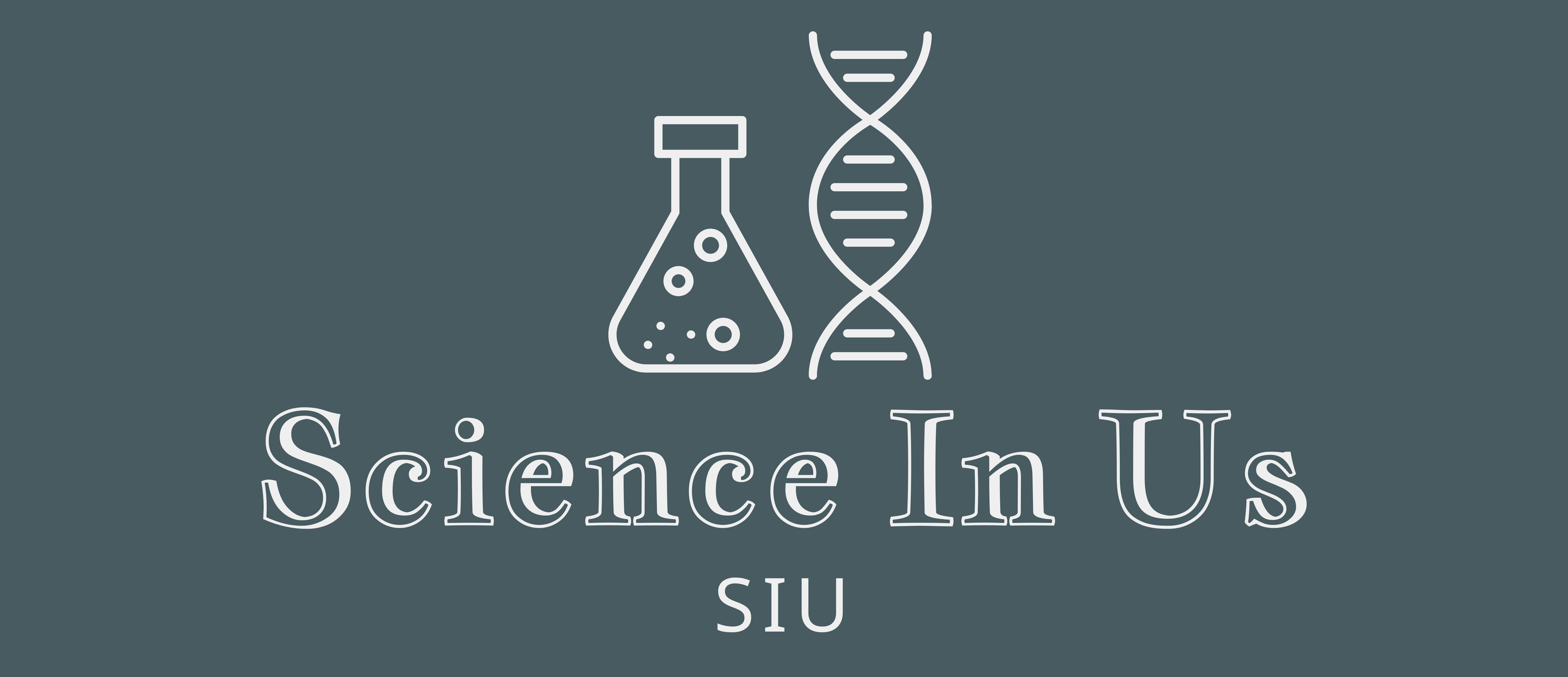Regulating gene expression is the critical function of cell development and cell cycle progression. When done incorrectly, wrong gene expression can cause abnormal cellular activity or control over cell growth, leading to various autoimmune diseases and cancer. One of the vital hallmarks in controlling the gene expression is the field of Epigenetics. In Greek, epi- means “outside”, so epigenetics describes the alterations done without changing the main DNA sequence. How does that work?
- What is epigenetics?
If DNA is a sequence of musical notes, epigenetics is all about making small adjustments like silencing or playing the notes stronger and lighter. Thus, epigenetics can change the melody of the same DNA sequencing without editing any notes. In the scientific term, epigenetics describes the activities that cause changes in the genes expression through biophysical and biochemical pathways, without altering the original DNA sequence.
Among different epigenetic pathways, the two most well-studied processes are DNA Methylation and Histone Modification. Current studies in epigenetics in studying its biochemical pathways, applications in cancer therapy will be discussed.
- Highlighting the notes – DNA Methylation
DNA Methylation is adding a methyl group (-CH3) onto a specific spot on DNA structure. This activity’s effect is mostly studied when short patches of DNA are highly methylated, especially on islands of Cytosine, a DNA base. This phenomenon can turn off a gene, like a stop sign for later molecular mechanisms.

In reality, this mechanism produces an “imprinting” phenomenon in animals, which describes silencing as a part of one whole chromosome. In mammals, chromosomes go in pairs (diploid system), thus silencing repetitive elements that prevent certain genes’ hyperactivity. The inactivation of X sex chromosome in females is an example of the imprinting effect. While 1 X copy in XY pair is enough for normal function. Hence, in females with 2 copies of X chromosomes, excessive genetic materials need to be silenced to keep the cells functioning properly. The epigenetic mechanism is necessary to tone down genes in replication, while 1 copy is just enough for the desired function.
Moreover, the hyperactivity of DNA Methylation was discovered as one of the causes of blocking the tumor suppressor genes. This led to a cascade of molecular events inducing cell cycle progression leading to cancer. A potential study subject is DNA Methyltransferase, an enzyme* performing DNA Methylation. Anticancer drugs were made to target DNA methyltransferase activity.
*An enzyme or a group of enzymes helps the biological reactions proceed favorably.
- Reshape the DNA physical structure
DNA in the cell is wrapped with protein histones into a condensed state – chromatin. This physical structure directly manages the accessibility of genes. The gene is open only when the wrap is loosened, and the molecular machine can reach the genetic material. Epigenetic changes can be done to alter DNA physical structure and regulate gene expression.
Changing the biological nature of protein histones also can produce similar results. Histone modifications also play a role in the “imprinting” phenomenon, preventing diploid genetics’s overproduction.

- Other processes associated with ncRNA (non-coding RNA)
Until now, ncRNA function still remains unclear while it was shown to be involved in genetic activity. Epigenetic mechanisms include the regulation done by ncRNA. ncRNA has been shown to participate in imprinting and X chromosome inactivation. Besides, nc RNA also performs small genetic editing and interference to block the transcription of target genes. Abberated from other processes targeting DNA, ncRNA can target the transcriptional product and produce the same effects as shutting down the genes.
- Epigenetic medical application
Epigenetics study has been applied to the cancer field, early disease detection, immunotherapy, and clinical treatment for autoimmune disease. Since the DNA methylation can shut off the antitumor gene, the development of cancer drug-Azatidine is targeted to reverse this mistake. Recently, DNA Methylation is recognized as a biomarker, which can be used to identify, track a disease, or even detect cancer in an early stage. For instance, studies have shown bladder cancer can be seen when some specific genes are methylated or marked. More current studies focused on the activity of DNA Methyltransferase that directs the immune response to target the infected sites. There a variety of other therapies are developed to target epigenomic pathways. Recent studies also focus on the role of RNA in epigenetics, and evidences showed that RNA-related epigenetic mechanism with significant functions in cellular development. In other words, RNA tends to guide the epigenetic machines to happen at the right place at the right time.
In conclusion, epigenetics plays an essential role in gene regulation, and it is reversible. Thus, recent attention was drawn to study the mechanisms and applications of epigenetics. Linking with various autoimmune diseases and cancer, epigenetic drugs sufficed as a potential medical therapeutic research field.

